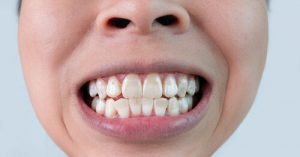When we notice holes in our teeth, the immediate suspicion often falls on cavities, the usual suspects of dental deterioration; however, the presence of holes in teeth that aren’t cavities introduces a fascinating twist to the narrative of oral health. This enigmatic condition, shrouded in misconception, calls for a deeper exploration into the less-trodden paths of dental science.
In this article, we embark on a journey to demystify the causes behind these mysterious dental indentations developing cavities, revealing insights that may challenge your understanding of oral health. As we peel back the layers of this dental dilemma, prepare to be intrigued by the revelations that await, for the health of your teeth holds secrets that are more than meets the eye.
Causes of holes in Teeth that aren’t cavities
The integrity of our teeth is vital to overall oral health, yet holes in teeth can occur for reasons beyond the common culprit of cavities. Understanding the various causes of these holes is essential for effective prevention and treatment of tooth decay. While tooth decay is a well-known issue, it’s not the only factor that can lead to dental deterioration and the formation of holes.
Causes of Holes in Teeth That Aren’t Cavities:
- Tooth Enamel Erosion: Acidic foods and drinks can wear away the tooth’s enamel, leading to tiny holes.
- Gum Disease: Advanced gum disease can cause the gum line to recede, potentially exposing the roots and creating pockets that can become holes.
- Dental Trauma: Physical injury to a tooth can result in chips or holes without cavities.
- Abrasion: Aggressive brushing or using hard-bristled toothbrushes can cause abrasion, leading to holes in the tooth surface.
- Attrition: Grinding teeth can wear down the enamel, particularly on the chewing surfaces, causing holes.
- Acid Reflux: Chronic acid reflux can bring stomach acids into the mouth, eroding tooth enamel.
- Dry Mouth: Reduced saliva production can lead to dry mouth, which increases the risk of enamel decay as saliva helps to neutralize acids and rebuild enamel.
Cupped teeth

Cupped teeth, a less commonly discussed dental condition refers to small, crater-like indentations that appear on the surfaces of teeth. These indentations can signify dental erosion, where enamel has been lost due to various factors, potentially leading to more significant dental issues if not addressed. Understanding the causes, implications, and preventive measures for cupping is essential for maintaining optimal dental health.
- Identification: Cupping is characterized by concave depressions on the biting surfaces of the teeth. These may be accompanied by increased sensitivity due to the loss of protective enamel.
- Causes: The primary cause of cupping is acid erosion, which can result from dietary habits such as frequent consumption of acidic foods and beverages. Additionally, acid reflux, where stomach acid reaches the mouth, can contribute to this erosion.
- Implications: If left untreated, cupping can lead to further deterioration of the tooth structure, causing increased sensitivity, higher susceptibility to cavities, and even tooth fracture in severe cases.
- Prevention: To prevent cupping, it is crucial to maintain a diet low in acidic substances, ensure proper oral hygiene to remove acidic plaque, and use toothpaste with fluoride to reinforce tooth enamel.
- Professional Care: Regular dental checkups allow for early detection and intervention. Dentists may recommend treatments such as fluoride applications or dental sealants to protect the teeth from further acid damage.
- Management: For those with medical conditions that contribute to acid erosion, such as GERD, medical management is also an important aspect of preventing cupping.
Holes in teeth that aren’t cavities can result from various factors, including enamel erosion, physical damage, and gum disease. Maintaining good dental hygiene, making informed lifestyle choices, and seeking regular dental care are key strategies to prevent and manage these dental issues. By addressing the underlying causes of the hole in your tooth and implementing protective measures, one can safeguard their oral health and preserve the integrity of their teeth.
Cavity vs Stain – Understanding the Differences
In dental health, distinguishing between a cavity and a stain is crucial for proper care and treatment. While both can affect the aesthetics and function of teeth, they are fundamentally different issues requiring distinct approaches.
A cavity results from tooth decay leading to a hole in the tooth, whereas a stain on the affected tooth is a discoloration that does not penetrate the tooth’s surface. Understanding these differences is key to maintaining optimal oral health and ensuring that each condition is treated appropriately.
Understanding the Differences:
- Cause and Development: Cavities are caused by tooth decay, which results from acid-producing bacteria breaking down the sugars in food and creating a sticky plaque that adheres to teeth. This can eventually lead to the destruction of the tooth’s enamel and the formation of a hole. Stains, on the other hand, are typically caused by the consumption of certain foods and beverages (like coffee, tea, and red wine), tobacco use, or inadequate brushing, which can lead to discoloration on the tooth surface.
- Appearance: A cavity often presents as a visible hole or pit in the tooth and may show signs of brown or black coloring due to the decay inside the tooth structure. Stains can appear as yellow, brown, or even white spots on the teeth but do not have the physical indentation that cavities do.
- Sensitivity and Pain: Cavities can cause tooth pain and sensitivity, especially when eating or drinking hot, cold, or sweet substances. This is due to the decay reaching the sensitive inner layers of the tooth. Stains do not cause pain or sensitivity since they only affect the tooth’s surface.
- Treatment: The treatment for a cavity typically involves removing the decayed portion of the tooth and filling it with a dental filling material to restore its shape and function. In contrast, stains may be addressed with professional teeth cleaning, whitening treatments, or at-home oral hygiene practices.
- Prevention: Preventing cavities involves maintaining good dental hygiene, including regular brushing with fluoride toothpaste, flossing, and reducing the intake of sugary foods and drinks. Preventing stains also involves good oral hygiene, as well as avoiding or limiting foods and habits that can lead to discoloration.
Recognizing whether a dental issue is a cavity or a stain is essential for effective dental care. Cavities represent a progressive condition that can lead to significant tooth damage and loss if not treated. At the same time, stains are a cosmetic concern that can be corrected with various whitening methods. Both conditions underscore the importance of regular dental checkups and a robust oral hygiene routine to ensure that any signs of tooth decay prevent cavities or staining are promptly addressed, preserving the health and appearance of one’s teeth.
Symptoms of Tooth Decay
Tooth decay is a common dental condition characterized by the destruction of tooth structure. It can lead to various symptoms that, if recognized early, can be treated effectively to stop tooth decay and prevent further deterioration of oral health. Awareness of these symptoms is crucial as it enables individuals to seek timely dental care. Herein, we outline the key signs that may indicate the presence of tooth decay.
Symptoms of Tooth Decay:
- Toothache: Persistent pain in one or more teeth is often the most noticeable sign of decay.
- Sensitivity: A noticeable sensitivity to hot, cold, or sweet foods and drinks can signal that decay has exposed the sensitive layers of the tooth.
- Visible Holes or Pits: These may become evident in the teeth as decay progresses.
- Dark Spots or Stains: Brown or black spots on the teeth can indicate the presence of decay.
- Bad Breath or Taste: Ongoing bad breath or a persistent bad taste in the mouth may be associated with decay and the bacteria involved.
- Pain When Biting: Discomfort or pain during biting or chewing can be a sign of decay that has weakened the tooth structure.
How to treat tooth holes
Tooth holes not caused by decay present a unique challenge in dental care. These lesions, which may result from wear, erosion, or physical trauma, require specific treatment strategies to restore dental health and functionality. Understanding the underlying cause is essential for effective treatment and prevention of further damage.
Treating Tooth Holes Not Caused by Decay:
- Dental Bonding: For minor chips or holes, dental bonding can be used. A tooth-colored resin is applied to the affected area and hardened with a special light, sealing the hole and restoring the tooth’s appearance.
- Veneers: If the hole is on the front surface of a tooth, a veneer—a thin shell of porcelain or composite resin—can be placed over the tooth to conceal the imperfection.
- Crowns: In cases where the structural integrity of the tooth is compromised, a crown may be recommended to cover and protect the tooth from further damage.
- Onlays and Inlays: When the damage is too extensive for a filling but not severe enough for a crown, an inlay or onlay made of porcelain, gold, or composite resin may be used.
- Root Canals: If the non-decay hole has led to damage within the tooth’s pulp or infection, a root canal may be necessary to remove the affected tissue and seal the tooth.
- Tooth Extractions: For holes severely weakening the tooth structure, extraction may be the most viable option, followed by tooth replacement options such as implants or bridges.
- Mouthguards: If the holes are due to grinding or clenching, wearing a custom-fitted mouthguard can prevent further damage.
- Dietary Adjustments: Reducing the consumption of acidic foods and beverages can help prevent erosion-related holes.
- Improved Oral Hygiene: Maintaining good oral hygiene is crucial, as it helps keep the teeth strong and healthy, preventing conditions that could lead to non-decay-related holes.
How to Prevent Holes in Teeth

Preventing tooth holes that aren’t caused by decay is an important aspect of oral health that often goes overlooked. These holes can result from abrasion, erosion, or trauma. By understanding and mitigating these factors, individuals can take proactive steps to maintain the integrity of their tooth enamel and overall dental structure.
Preventing Non-Decay Tooth Holes:
- Wear Protection: Utilize mouthguards during sports or if you grind your teeth at night to prevent physical wear and tear.
- Dietary Choices: Limit acidic foods and beverages, like citrus and soda, which can erode enamel over time, leading to holes.
- Proper Brushing Technique: Use a soft-bristled toothbrush and gentle brushing techniques to avoid abrasion of the tooth surface.
- Regular Dental Visits: Attend routine dental checkups for professional cleanings and to catch any signs of wear before they develop into holes.
- Avoid Hard Foods: Be cautious when eating hard foods or candies that can crack or chip teeth, creating holes.
- Erosion Control: Manage gastroesophageal reflux disease (GERD) and other medical conditions that can cause stomach acid to enter the mouth and erode teeth.
- Straw Use: Drink acidic beverages with a straw to minimize contact with teeth.
- Fluoride Use: Incorporate fluoride toothpaste and mouth rinses into your oral hygiene routine to strengthen enamel.
Tooth holes that are not a result of decay can be effectively prevented with mindful habits and protective measures. By addressing the external factors that contribute to enamel erosion and structural damage, one can significantly reduce the risk of developing such dental issues. It is essential to maintain a consistent oral care routine and seek regular dental advice to ensure the longevity and health of your teeth.
Conclusion
In summary, maintaining a vigilant approach to oral health is your best defense against holes in teeth that aren’t cavities. These dental imperfections can be mistaken for cavities but often stem from issues such as enamel erosion, gum disease, or even wear from teeth grinding. To safeguard your smile, it’s essential to adopt comprehensive dental care routines, including fluoride toothpaste and regular visits to your dentist. By understanding the nuances of oral health and staying informed about the various conditions that can lead to holes in teeth, you can take proactive steps to ensure your teeth remain strong and intact. Remember, a proactive approach can make all the difference in preventing the progression of dental issues and keeping your teeth free from unwanted holes.
References
Cavities: Symptoms and Causes
https://www.mayoclinic.org/diseases-conditions/cavities/symptoms-causes/syc-20352892
The Stages of Tooth Decay
https://www.healthline.com/health/dental-and-oral-health/tooth-decay-stages
Cavity vs. Stain: How to Tell the Difference
https://www.verywellhealth.com/cavity-vs-stain-7095978
PubMed Abstract: The Influence of Diet on Dental Caries
https://pubmed.ncbi.nlm.nih.gov/25765291/
Tooth Decay
https://medlineplus.gov/toothdecay.html


 Can Oil Pulling Reverse Cavities? Unveiling the Truth
Can Oil Pulling Reverse Cavities? Unveiling the Truth  Do Cavities Spread to Other Teeth? Unraveling Dental Myths and Facts
Do Cavities Spread to Other Teeth? Unraveling Dental Myths and Facts  Yoli Meal Plans: Unlocking the Secrets to Optimal Health and Wellness
Yoli Meal Plans: Unlocking the Secrets to Optimal Health and Wellness  Can Spironolactone Cause Weight Gain: Exploring the Potential Effects of this Medication
Can Spironolactone Cause Weight Gain: Exploring the Potential Effects of this Medication  Interproximal Cavity: Understanding and Treating this Dental Condition
Interproximal Cavity: Understanding and Treating this Dental Condition  Holes in Teeth That Aren’t Cavities: Unraveling the Mystery
Holes in Teeth That Aren’t Cavities: Unraveling the Mystery  Gastric Sleeve Surgery Cost: Unraveling the Financial Aspects of a Life-Changing Procedure
Gastric Sleeve Surgery Cost: Unraveling the Financial Aspects of a Life-Changing Procedure  Unlock Your Potential: Diet Plans for Men That Revolutionize Wellness!
Unlock Your Potential: Diet Plans for Men That Revolutionize Wellness!  Tailored Diet Plans for Women for Vibrant Living and Lasting Weight Loss
Tailored Diet Plans for Women for Vibrant Living and Lasting Weight Loss 


